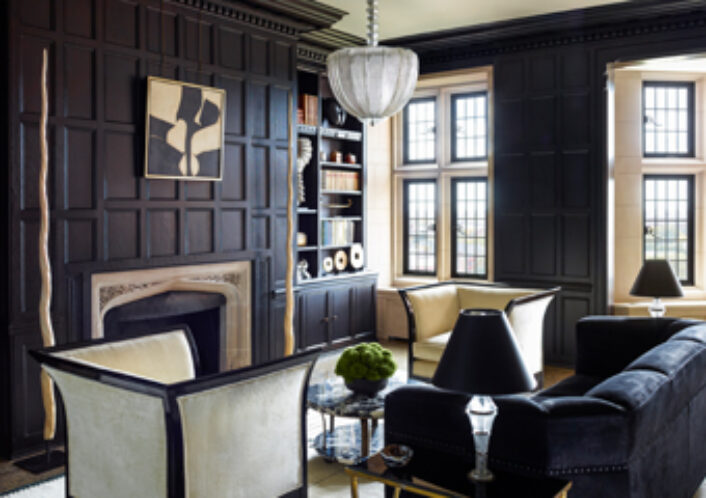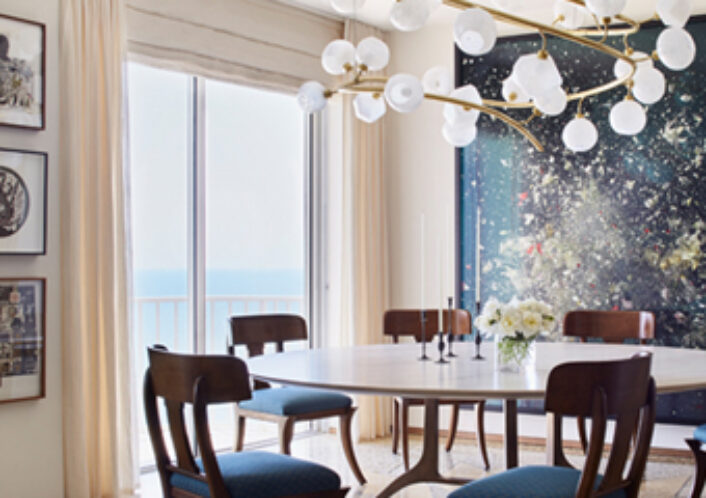Culture
Fortuny turns 100!
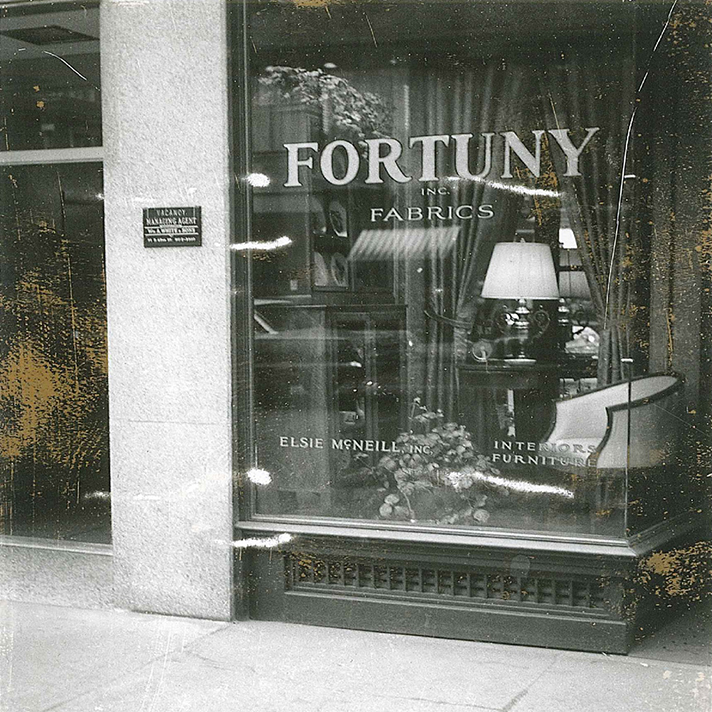
The brand’s storefront at 509 Madison Avenue.
Image courtesy of: Fortuny
The company Fortuny was founded in 1907 by Mariano Fortuny, a Spanish-born textile and fashion designer. Already internationally known for the beauty and inventiveness of his work, the first Fortuny products were intricately hand-pleated Delphos and Peplos gowns made from luxurious Japanese silk that was shaped at an extremely high temperature. Works of art, these hand-painted, printed fabrics soon adorned the interiors of churches, museums, and luxury residential interiors.
Fortuny bequeathed his company to his premier interior designer Elsie McNeill Lee in 1949. Twenty years prior, Lee successfully established the brand in the United States and went on to be its single representative in the United States. Lee brought additional acclaim to the company by positioning its “real estate” on Madison Avenue.
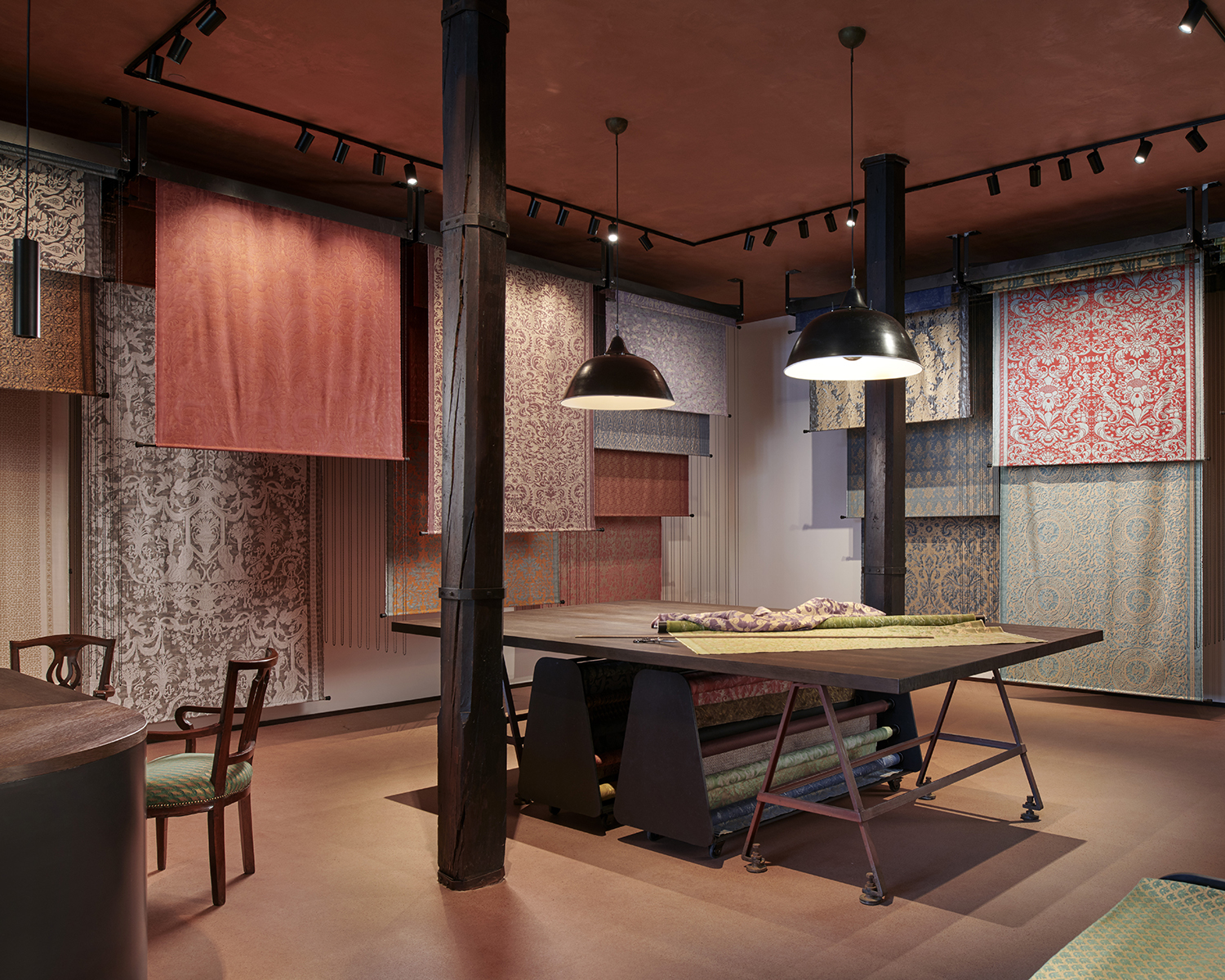
Inside the new Venice showroom.
Image courtesy of: Galerie Magazine
Lee ran the company for almost forty years; during this time, she married the Italian Count Alvise Gozzi and became Countess Elsie Lee Gozzi (La Contessa). In 1988, the Countess finally persuaded Maged Riad to purchase her company… she had been asking her trusted confidant to buy the company for several years. During her time at the helm, the Countess continued to manage the company and oversee production. Soon after the Countess’ death in 1994, Riad passed management operations to his two sons, Mickey and Maury.
Mickey, an artist and photographer, and Maury, the brand’s CEO have been working on further developing Fortuny’s legacy with the help of Alberto Torsello, the new artistic director. Using his prowess as an architect, Torsello was instrumental in creating a show-stopping showroom in Venice. The showroom is on Giudecca Island, in a building that contains the factory Fortuny set up in 1922.
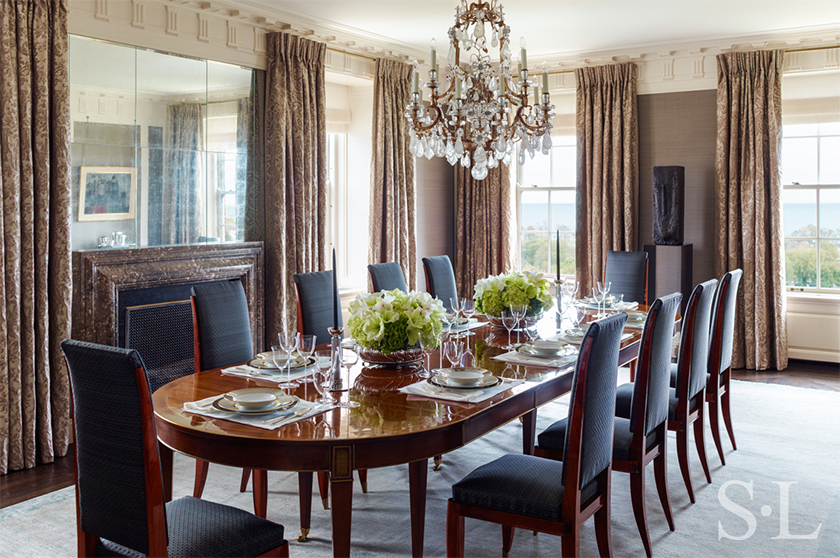
We love using Fortuny fabrics in our residential interiors, and Suzanne has been to the museum and factory in Venice! Shown here is the luxurious dining room of our Lakeview Residence with drapery in a classic Fortuny print.
Photo by Eric Piasecki courtesy of Suzanne Lovell Inc.
View more of this residence
Fortuny’s manufacturing plant is still operational and active; it produces more than 82,000 feet of fabric each year. The fabrics are made from cotton using the special techniques and the original machines that Fortuny himself invented. The colors are created from the formulas Fortuny’s wife, Henriette Negrin, invented at the turn of the century. Specifically, Negrin used natural materials, insects, and plant extracts to produce the special “Fortuny green.” Along the same lines, Fortuny’s patterns (courtesy of Women’s Wear Daily) “are inspired by the light and the reflections of the Venice lagoon.”
The designs always refer back to Venice as “the fountain of inspiration;” however at the core of everything is Fortuny’s originality. In such, so much of Mariano Fortuny’s influences are relevant still today; and Torsello believes that those special aspects will be influential in the future.
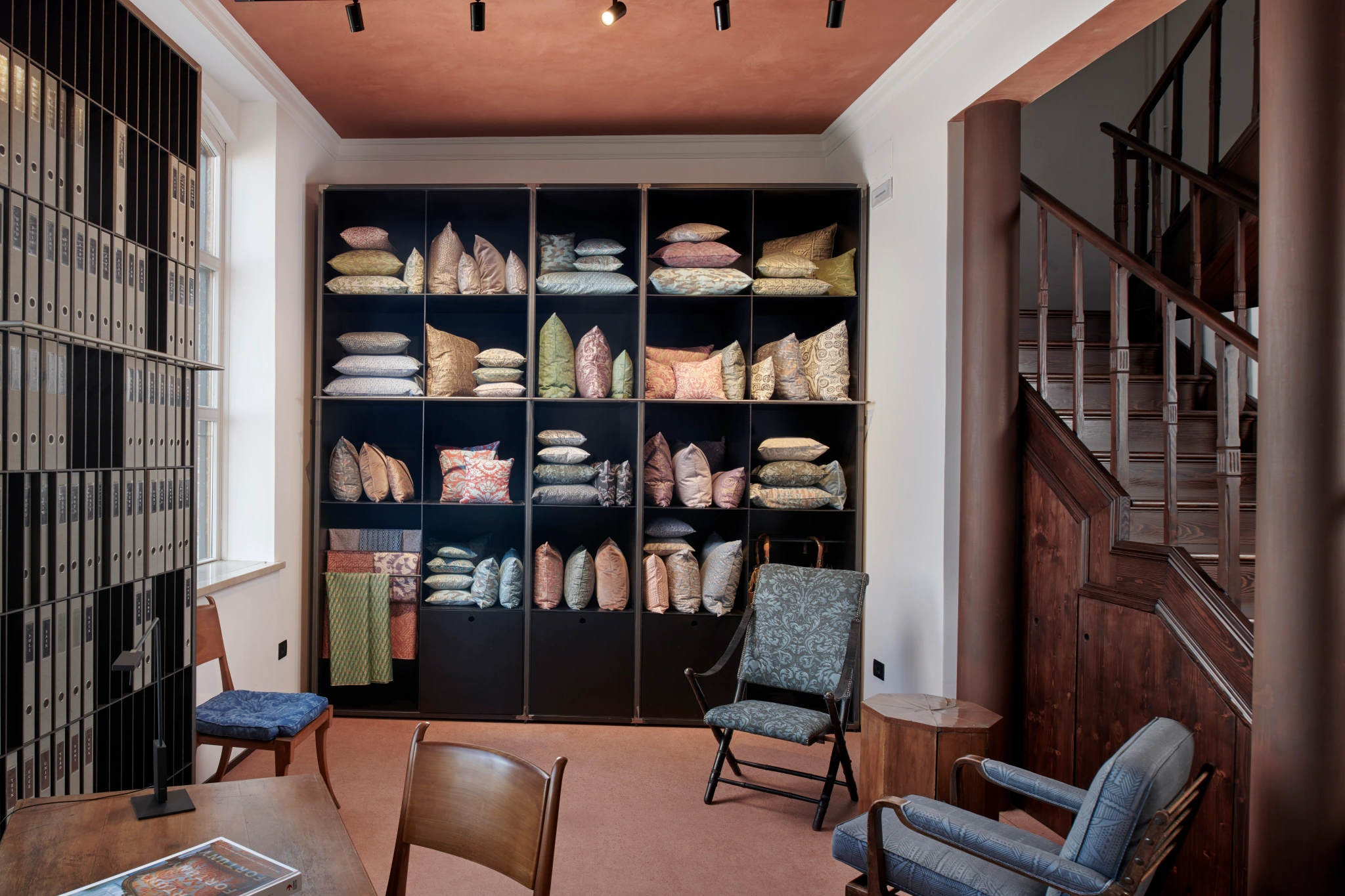
Inside the showroom, the pillow wall.
Image courtesy of: Women’s Wear Daily, photographed by: Colin Dutton
Fortuny is turning 100… and in celebration of its centennial anniversary, the company transformed a former convent into a stunning new showroom. Although Venice might not be the most efficient place to house the operations, Riad remains committed to the city’s arts and culture. As he says, Venice is the place “where the East and the West meet.”
Torsello designed a new patented system for textile display in the new showroom. Further highlighting that the first printed fabrics date back to 1922, the fabric rollers are installed on the ceiling… allowing for innovative viewing as it is possible to lower the (courtesy of Fortuny), “textiles like a theater curtain, an homage to innovations Mariano Fortuny made to theater design and scenography in the early 20th century.”
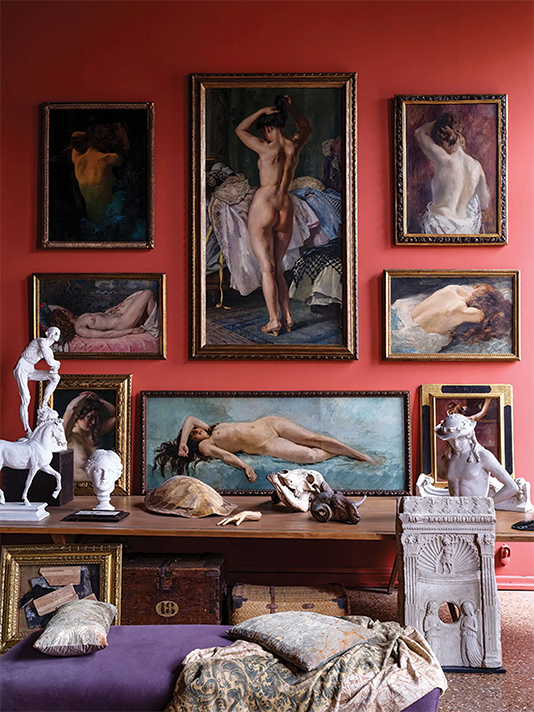
Inside the Museum, Fortuny’s “painting atelier” on the palazzo’s first floor.
Image courtesy of: The Art Newspaper, photographed by: Massimo Listri
Also in honor of the brand’s 100th anniversary, Museo Fortuny has been restored as a permanent venue, celebrating the founder’s life and work. Inside the Gothic palazzo that Fortuny himself called home and workshop, the house-museum was bequeathed to Venice in 1956. Now, more than two years after the renovations that were necessary because of the Venice floods of 2019, Museo Fortuny is no longer a temporary exhibition space; rather, the venue will be open year-round.
With almost the entirety of Fortuny’s original collection back home, it took a designated team an entire year to plan a layout that would properly (courtesy of The Art Newspaper) “reflect the designer’s maximalist spirit. Antique textiles hang from the ceiling, long sofas are covered in cushions made from Fortuny printed fabrics and his mural The Winter Garden (1915-40s)—which was obscured by furniture for years—is resplendently uncovered. The second-floor studio space explores Fortuny’s innovations in photography, printing and set design. Books lie open on the desk in his library: photo albums, pressed leaves and anatomical sketches all lovingly labelled by hand.”
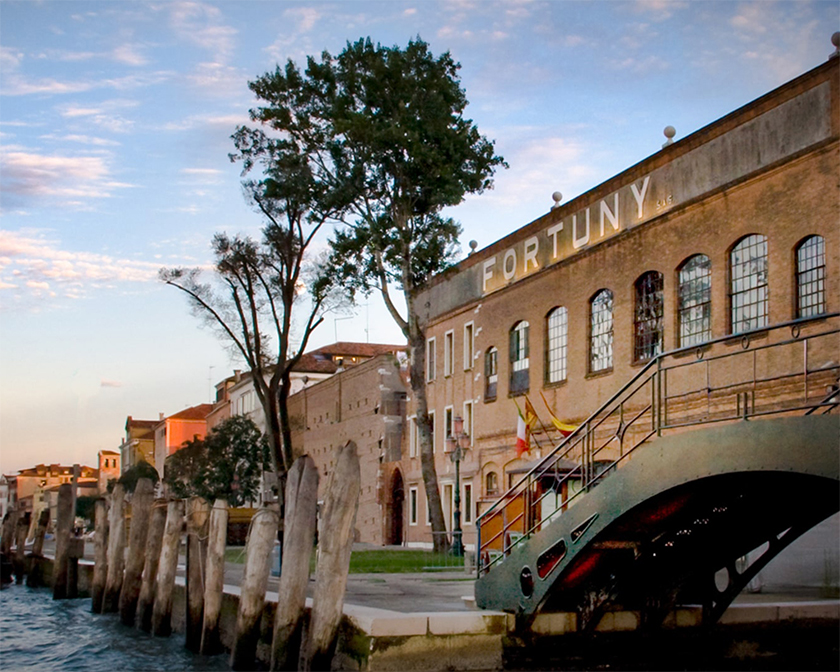
The façade of the atelier in Venice.
Photo courtesy of Galerie Magazine
Toresello said, regarding the brand’s momentous anniversary, “When we approached the company’s centennial, it became clear how important it is to the future of our beloved Venice.” Another reason to visit “The Floating City!”

